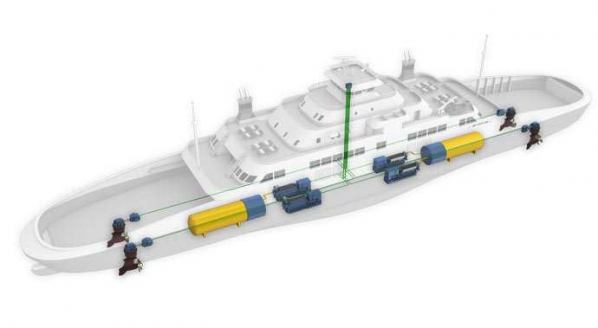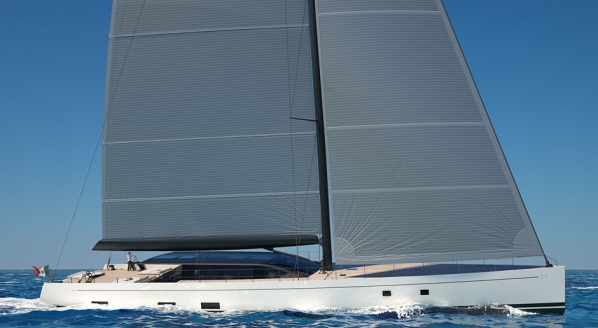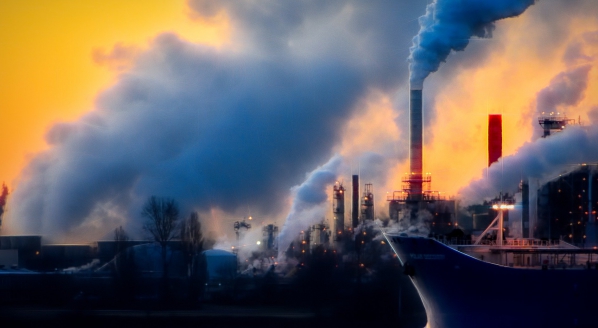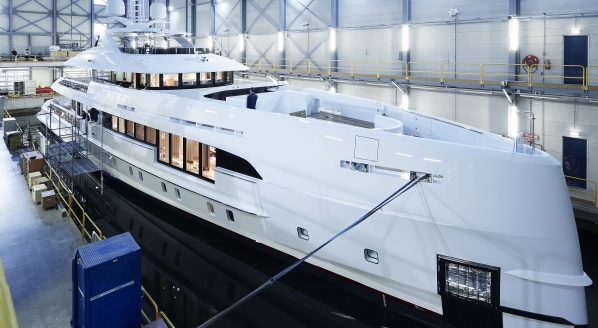Why the rush?
There is a lingering fascination in the superyacht industry around 'top speed'…
'Top speed' is a power-boat thing, partially relevant to tender use, in an emergency. A planing rib at 45 knots is one thing, but expecting a hulking superyacht to keep scrummaging its way through the water, consuming astronomical amounts of fuel, stressing the engines and engineers in equal measure, in a quest to push the boat from 15 to 16.5 knots should not be a thing. Why then does it often fall to the crew to inevitably let the guests down by informing them that there is precisely zero chance the boat can do 18 knots for more than 15 minutes, with everything from that point given the impression that we were holding something back.
Big yachts with big engines push the yacht to ‘top speed' on sea trials, usually with teams of CAT or MTU engineers on board and only for a short amount of time where a couple of minutes feels like a couple of hours. When a boat is pushing that much water, it shakes like a jackhammer and the guests will hate you for it.
This trend, at least concerning the advertised speed, has thankfully levelled out somewhat in recent years. The ostentatious rooster’s tails still crisscross the Mediterranean coastline but boasting about speed in the marketing of yachts, less so.
At least for now everyone has the right to a 120-foot jet drive with the fuel consumption rate of a forest fire, but let’s leave the speed merchants to one side. The top speed for large yachts with conventional mechanical diesel propulsion is a theoretical curiosity, not a feature. The way that the number lingers in the mind has a pernicious effect, however. Google Earth and a calculator can be a dangerous combination in the wrong hands. When an owner wants to pick up the boat or a charter broker wants to fit in another trip, the efficient cruising speed becomes the worst-case scenario for the timeframe the captain must present.
Exponential growth curves are a funny thing. As a yacht pushes more and more water ahead of itself, the energy required to push against the bow wave increases drastically. Many of the less adventurous superyacht designs today, above the water, bear not a passing resemblance to powerboats, but they can’t escape the fundamentals of hydrodynamics. Microscopic increases in speed lead to enormous amounts of fuel being consumed.
Pushing boats to make these incremental speed gains and holding on to the idea that in some way, the efficient cruising speed is holding something back should be retired from our thought process. Simply stating that ‘it is bad to burn so much fuel, so slow down’ misses the point also. The greater benefit of abandoning any mention of ‘top speed’ for large yachts - outside of the classroom - is that it can fit into a wider narrative of an attitudinal shift from the industry, in line with the rest of the world. We are redefining why we travel. It’s not enough to just say ‘because I want to’ anymore. The superyacht industry is not immune to this shift.
Effective marketing and communication that there is a very specific speed a yacht will travel at are needed. It is not a case of ‘putting the hammers down’ and getting there a few hours earlier for the boss or making the next canal crossing so as not to miss the refit yard schedule. Bunkering agents may love it, but it reflects an ageing attitude that is out of step with other comparable industries. Superyachts will need to move in sync with the new expectations of efficiency, emissions and be accountable as to why decisions are made. We can start by slowing down a bit. Razor-thin timeframes can be relaxed, and the top speed forgotten.
NEW: Sign up for SuperyachtNewsweek!
Get the latest weekly news, in-depth reports, intelligence, and strategic insights, delivered directly from The Superyacht Group's editors and market analysts.
Stay at the forefront of the superyacht industry with SuperyachtNewsweek
Click here to become part of The Superyacht Group community, and join us in our mission to make this industry accessible to all, and prosperous for the long-term. We are offering access to the superyacht industry’s most comprehensive and longstanding archive of business-critical information, as well as a comprehensive, real-time superyacht fleet database, for just £10 per month, because we are One Industry with One Mission. Sign up here.
Related news

The potential of LNG fuel for superyachts
Kongsberg Maritime has conducted R&D into the potential of LNG fuel in the maritime industry for over 20 years
Technology

Is the superyacht sector ready to switch over to hybrid power?
ABS' Daniele Bottino discusses the evolving regulations that supports low noise, lower emission dual fuel designs
Technology


Heesen launches second hybrid yacht
The 49.9m vessel is the second hybrid yacht in its 5000 aluminium FDHF class
Fleet
Related news
The potential of LNG fuel for superyachts
5 years ago
Considerations for the future
6 years ago
Heesen launches second hybrid yacht
6 years ago
NEW: Sign up for
SuperyachtNewsweek!
Get the latest weekly news, in-depth reports, intelligence, and strategic insights, delivered directly from The Superyacht Group's editors and market analysts.
Stay at the forefront of the superyacht industry with SuperyachtNewsweek



